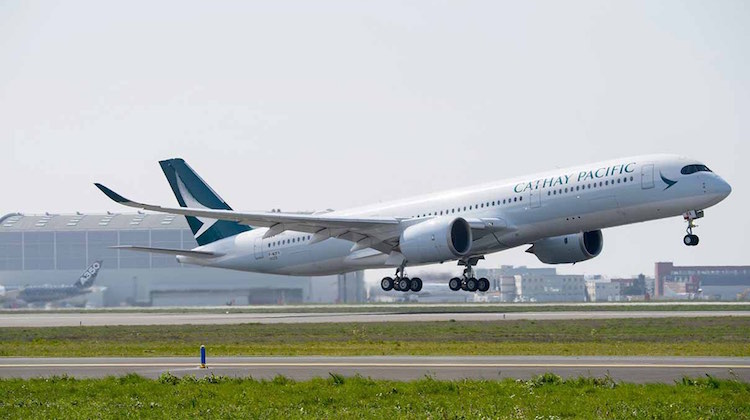
Airbus has reaffirmed its forecast of delivering 50 of its A350-900s in calendar 2016, despite the “challenges” of delays to cabin equipment.
Through the first five months of calendar 2016, Airbus has delivered nine A350-900s to the likes of Cathay Pacific and Singapore Airlines, meaning it has to hand over a further 41 frames between now and the end of December to meet its target.
Efforts to get A350s out the door to its airline customers have been hampered by a shortage of cabin equipment from a number of suppliers.
However, Airbus executive vice president programmes Didier Evrard says the target can still be met, albeit not without a big effort from all involved in the program.
“We have challenges,” Evrard told reporters at company’s Innovation Days media briefings in Hamburg on Monday.
“The target remains absolutely achievable with a high level of effort from the A350 team.”
Evrard said production had improved in the past three months, with Airbus adding extra resources to the task.
“Fortunately, we are lucky enough that this year the A330 production is going down so this frees up additional up an additional station 20 that we can use for the A350,” Evrard said.
“We have also mobilised other facilities in Toulouse to cope with working parties.
“We are where we are. The fixes are in place.”
Meanwhile, Airbus chief operating officer Tom Williams said the proposed production rate of 60 A320 Family aircraft a month by 2019 was “enough for what we see today”.
“We’ve made studies to go beyond that but we are always making lots of studies and evaluations,” Williams said.
“I don’t think there is any real serious work going on and there is certainly no capital investment plans at this stage.”
“We are not spending too much time and energy thinking beyond that.”
“It is not one of our top priorities.”
Williams said the falling fuel price made it more challenging to sell A320s today when compared with the period when the A320neo was launched.
However, the low fuel prices could help support efforts to boost sales of the A380.
“The fuel price, as it is today, helps us in presenting the risk and reward ratio of the A380. That is one of the other things that we are going to push really hard,” Williams said.
“This is an aircraft that will still come back.”
Other efforts to promote A380 sales included improvements to the efficiency of the cabin (i.e. add more seats) and boosting the operational reliability of the aircraft through longer periods between maintenance checks. These efforts may allow airlines to operate a small fleet of A380s without causing big schedule disruptions when an aircraft is out.
Given the low demand for the world’s largest passenger aircraft, Airbus has installed a fourth final assembly line for its A320 Family into a building at its Hamburg-Finkenwerder facility that was originally slated for A380 production.















